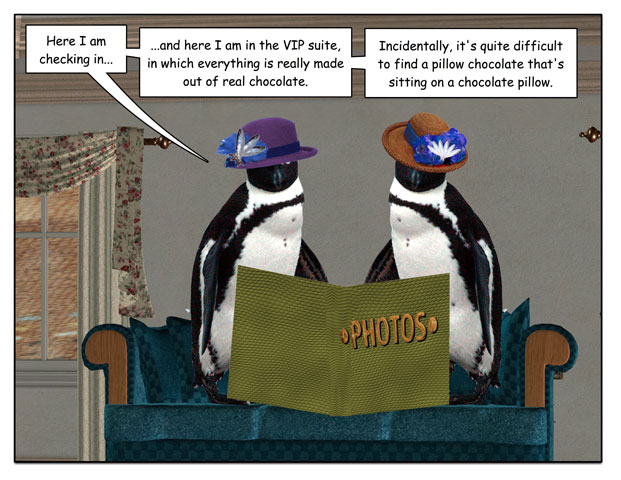'Bird geek' is man behind the penguins
His official title at the Cincinnati Zoo & Botanical Garden is aviculturist.
Or, as Cody Sowers puts it, "I'm kind of a bird geek."
True bird geek that he is, Sowers isn't in it for the glamour. The 29-year-old Milford resident doesn't mind toiling in a cold, wet environment; or thawing and preparing 60 pounds of frozen fish for the 100 or so birds in his care; or cleaning exhibits - "we're hosing poop," he says - before the first zoo visitors arrive.
• Photo gallery
As a keeper in the polar section of the Wings of the World exhibit, he works with about 20 species of sea birds from the Arctic and Antarctic, including penguins, puffins and auklets. The zoo has several species of auklets that are not housed anywhere else the world.
If Sowers does find himself in a foul - rather than fowl - mood, all he need do, he says, is glance at the people streaming through the bird house.
"You see kids and adults - everybody - just so excited to be here. That kinds of keeps me in check because even if I'm having a bad day, all these people would probably pay to be standing right here."
"Right here" is behind the glass of the Sub Antarctic Coast display, where it's 40 degrees and Sowers has just finished hand-feeding six king penguins. The second largest penguin species, king penguins stand about 3 feet tall and weigh up to 35 pounds.
Those are the birds he helps guide through the park for the Penguin Parade at 10 a.m. and 2:30 p.m. daily through February.
It's nothing like herding cats, he says.
"Since they're a colony animal, they like to stay in a large group. As long as they're together, they're comfortable."
Sowers, who has a degree in natural and historical interpretation from Hocking College, is particularly comfortable talking to zoo visitors.
"One of the favorite parts of my job is trying to get people to appreciate nature. Everybody likes penguins, but then you put a penguin in front of them, and tell them why the penguin is so amazing, and you can see it kind of click.
"Penguins are so bizarre in the bird world. They don't fly. They spend the majority of their lifetime swimming. Their bones are solid as opposed to hollow.
"More often than not, people don't realize penguins are birds."
Sowers, whose SeaWorld and zoo jobs have allowed him to work with 10 of the 17 penguin species, didn't grow up pining to be a penguin expert. He grew up on a farm in southeastern Ohio, graduated from college and got a job with Ohio's state park system. After marrying and moving to California, he couldn't latch on to a parks job, so he worked as an educator at SeaWorld in San Diego.
When he and his wife, Melanie, returned to Ohio 2½ years ago, the Cincinnati Zoo hired him not only because he's affable, but because of his SeaWorld training, says David Oehler, director of animal collections.
In the wild, penguins, puffins and auklets live in pristine environments. In captivity, "those birds are a challenge," Oehler says. "The air quality, the water quality, the type of feed they get - everything has to be perfect, and he understands that."
The zoo sent Sowers to Maine for two weeks last spring to work with Project Puffin, a seabird restoration program of the National Audubon Society. He slept in a lighthouse on an island 20 miles into the Atlantic coast and arose as early as 3 a.m. some mornings to hike to a bird blind with 20 pounds of gear. Then, he'd settle in for four hours to observe razorbills, a penguin-like bird in the auk family.
"Fantastic," he says.
He has introduced his wife to bird-watching, but, "I like a little bit more fast-paced things," Melanie says diplomatically.
Even though the bedroom of their 2½-year-old, Lucy, has a penguin theme, that's not her favorite zoo animal.
"She'll say, 'I don't want to go to the bird house, Daddy. I want to see elephants!'" her father says.
So, for now, when it comes being a bird geek, he's flying solo.
Source




















































Posted: 01/27/11